The Hadrianic Column Base: From the Church of the Holy Sepulchre to the Terra Sancta Museum
Until October 2022, a visitor casting a glance in the dimness of the north aisle of the Church of the Holy Sepulchre (an area known as the “Arches of the Virgin”) would certainly have noticed the remnant of a monumental column, heavily damaged, and completely covered with graffiti drawn with pen, indelible marker, and even… lipstick! These recent markings are mostly the result of mass tourism over the past decade.


What is it?
An “Attic base with pedestal”: the component that, in classical architecture, supports the shaft of the column. The base in question comes from the colonnade of the “Rotunda” or “Anastasis” (Greek for “Resurrection”), the famous early Christian edifice with a central plan and dome, constructed in the 4th century AD around the venerated Tomb of Christ.
What is the story of its discovery? What has its new location been since October 2022?
The discovery of this base dates back to the early months of 1967 when the major restoration work on the walls of the Church of the Holy Sepulchre, undertaken by the Three Communities (Greek Orthodox, Latin, and Armenian), reached its most delicate phase: the pillars of the Rotunda. All the walls of the basilica were then examined, stripped, studied, and restored. The work began with the three pillars of the Latins, that is the northeast area, owned by the Custody of the Holy Land. Under the wall covering, the ancient circuit gradually reappeared, as conceived by the architects of the 4th century AD for building the dome: the alternation of a pair of pillars for every three columns, to reach a total of six pillars and twelve columns. If the plan of the Rotunda regained its original aspect, the same was not true for the entire set of pillars of the colonnade: only the lowest levels preserved the pillars of the 4th century and, very rarely, the original pieces of the colonnade in their place. For the upper part and the gallery, however, the phase of medieval restoration (11th century AD) appeared, undertaken after the destruction ordered by the caliph Al-Hakim (1009 AD).
The best-preserved part turned out to be that of the Latins, that is of the Custody of the Holy Land. These were two ancient bases of the 4th-century colonnade: one, slightly larger and without crosses, in the original position and shape; the other, with a pair of crosses sculpted on the sides, may have been reworked in later epochs. The first is the subject of this article. The bases supported imposing column drums, carrying their respective Corinthian capitals: the capitals and a column were secured.


What are the other elements currently in the possession of the Custody of the Holy Land?
Facing the Tomb, the 11th-century absidal arch was supported by an angular column on each side, made up of a patchwork of older elements, reused and assembled in an original manner. These are, in particular, two monumental column drums, serving as the base for two twin angular columns (also called “heart-shaped”), topped by their capitals “with leaves of acanthus moved by the wind,” themselves crowned by two capitals bearing the monograms of Emperor Maurice (582-602 AD) and his family: his wife Constantina and his sons Tiberius and Theodosius.
All these elements were so severely damaged by fires and earthquakes that restoration was impossible: the ancient remains of the Rotunda had to be replaced. The Three Communities then agreed on a complete replacement with copies. Each owner decided the destination of the old architectural elements and managed their possible transport to another place.

The Custody of the Holy Land, the owner of the best-preserved pieces, entrusted their study to Fathers C. Coüasnon, a Dominican, and V.C. Corbo, a Franciscan, and proceeded with their removal in 1971-72. During the dismantling operations, some of the pieces, already very damaged, irreparably shattered: they have therefore not come down to us, except through archival photographs. The best-preserved capitals, and of smaller dimensions, were immediately taken to the Archaeological Museum of the Studium Biblicum Franciscanum: the two capitals of Emperor Maurice and the fragments of the two angular capitals “with leaves of acanthus moved by the wind”. Almost all the other surviving fragments, due to their large size and poor state of preservation, were transferred to the garden of the Gethsemane convent where they remained for fifty years. The exception was the Attic base with its pedestal – our subject – which remained in the Basilica until October 2022, not far from the place of its discovery. Thanks to our research, it was possible to precisely identify where it came from.
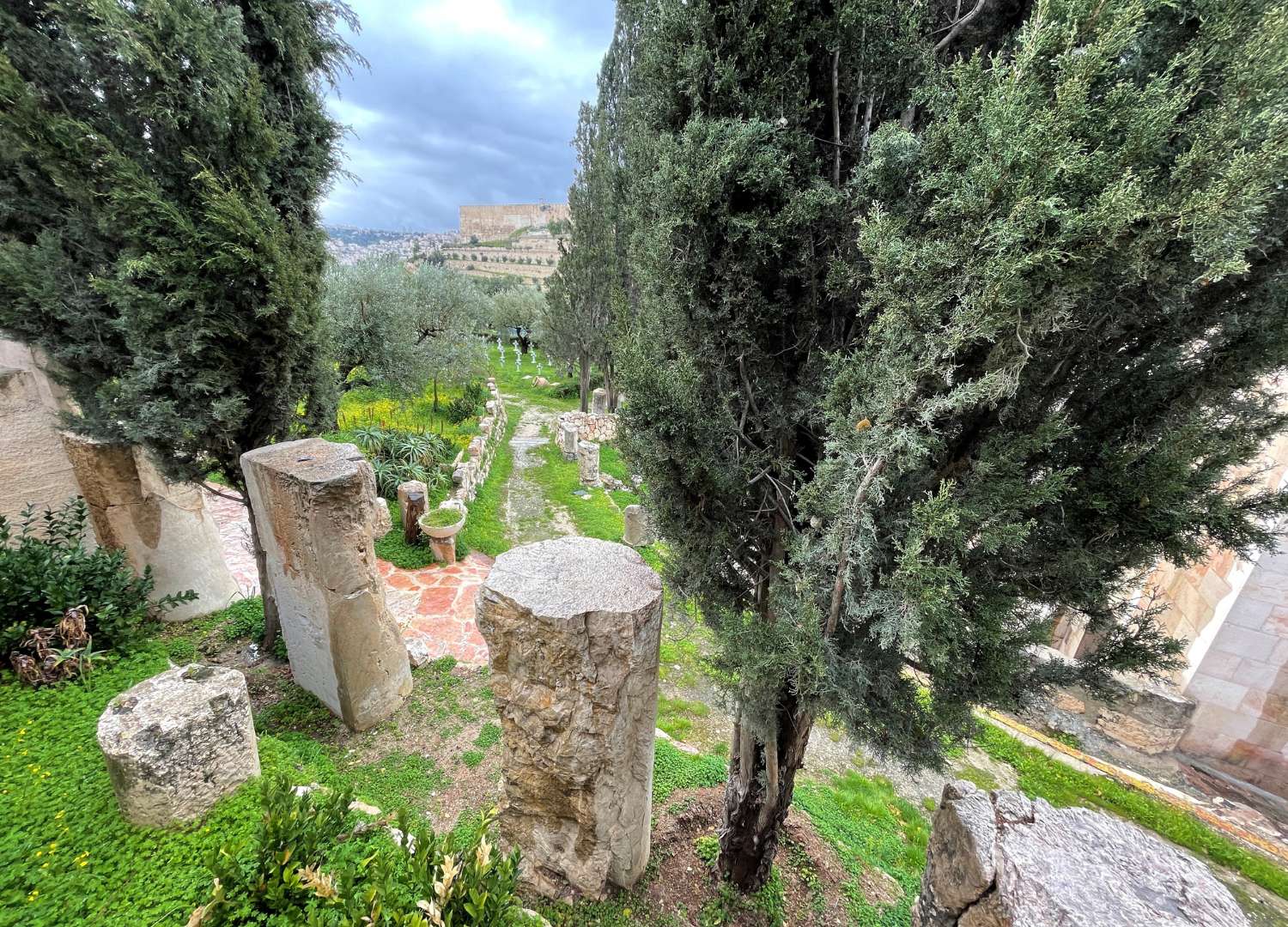
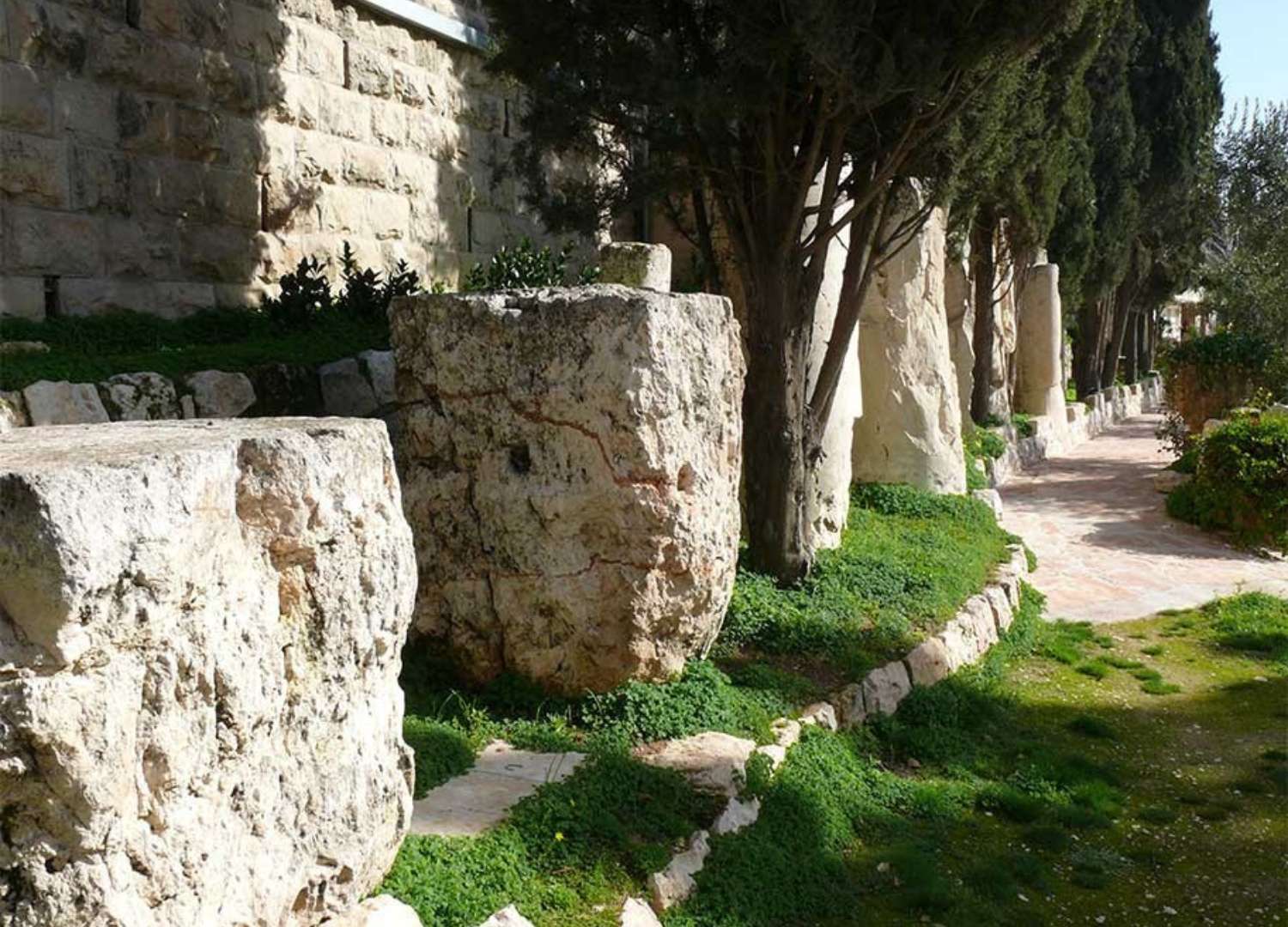
Why did the Custody secure all elements except the Attic base?
Two explanations are likely: the sudden death of Father C. Coüasnon (November 12, 1976), on one hand, and on the other, its exceptional dimensions. These factors likely led to the abandonment of the project.
How was the transport to the archaeological museum carried out?
More than fifty years after their rediscovery and transport to various locations (a few to the Museum, most to Gethsemane, one remaining in the basilica), the time had come to bring all these remnants to a single place to better preserve, study, and display them.
This was made possible by the fortunate coincidence of the grand project to reorganize the archaeological museum (now part of the Terra Sancta Museum): the new hall dedicated to the Holy Sepulchre was designed and built precisely to house the precious remains of the Rotunda.
The transport of the column fragments from Gethsemane (approximately 3.6 tons per fragment) and the two colossal capitals (approximately 2 tons each) took place from June 9 to 15, 2022. Meanwhile, the more challenging transfer of the base with its pedestal required more extensive planning: precise measurements were needed both by us and the Technical Office of the Custody. Made of mizzi hilu (a local stone of a reddish-pink variety), the estimated weight was about 7 tons, but the project was feasible: the base was fragmented into three parts, which facilitated the transport, to be carried out in at least two phases (on October 18 and 19, 2022), with a maximum weight of 3.5 tons per operation. Once the calculations of the force vectors were made, a special ramp was constructed on the forecourt in front of the basilica. The upper fragment posed no particular difficulties and easily passed through the small door of the square. However, the passage of the lower fragment was more complex: with a side of 153 cm, but a minimum width of 137.5 cm if rotated 60 degrees to the side, it could pass through a door of 140 cm, provided that its position was meticulously controlled.
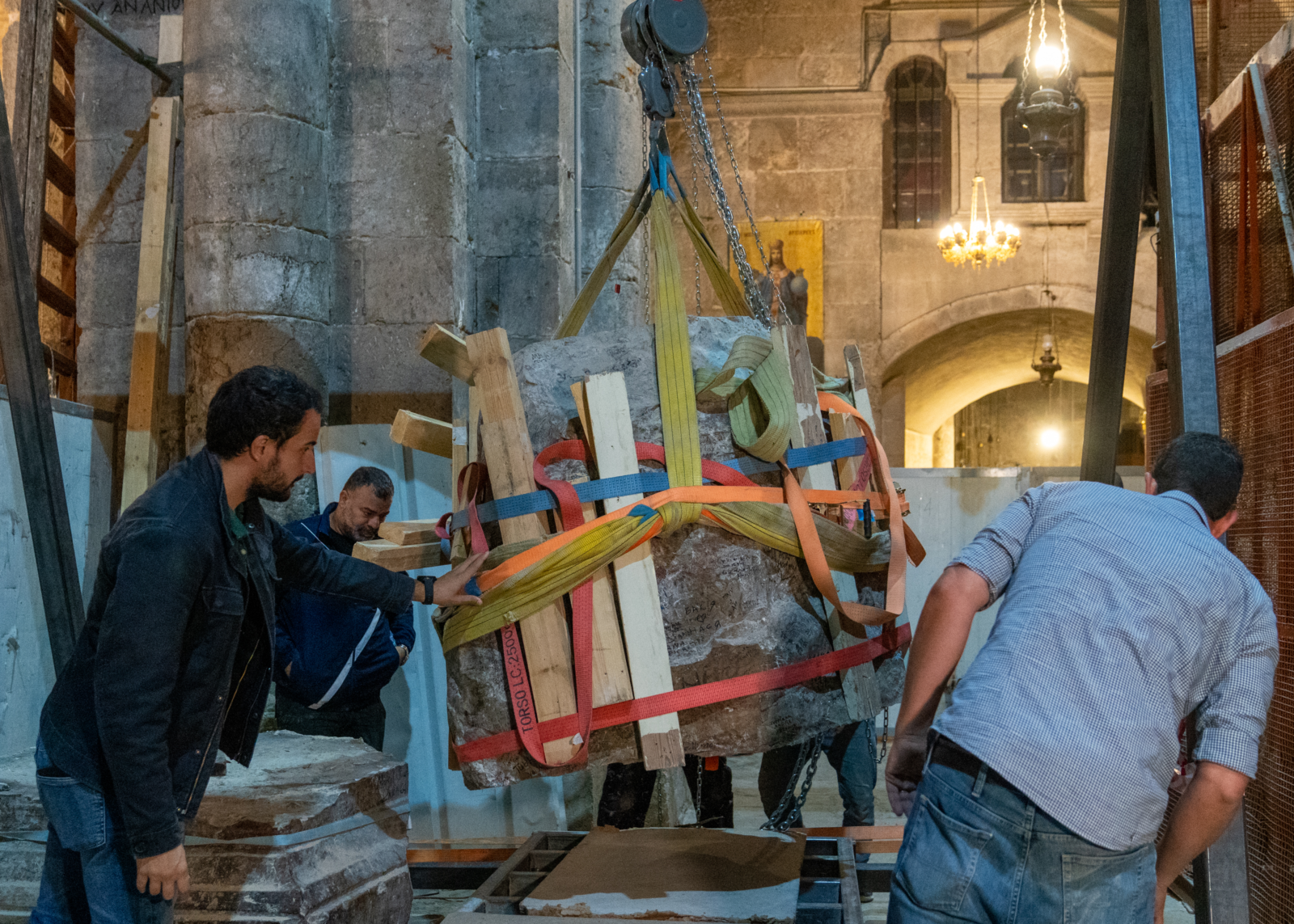
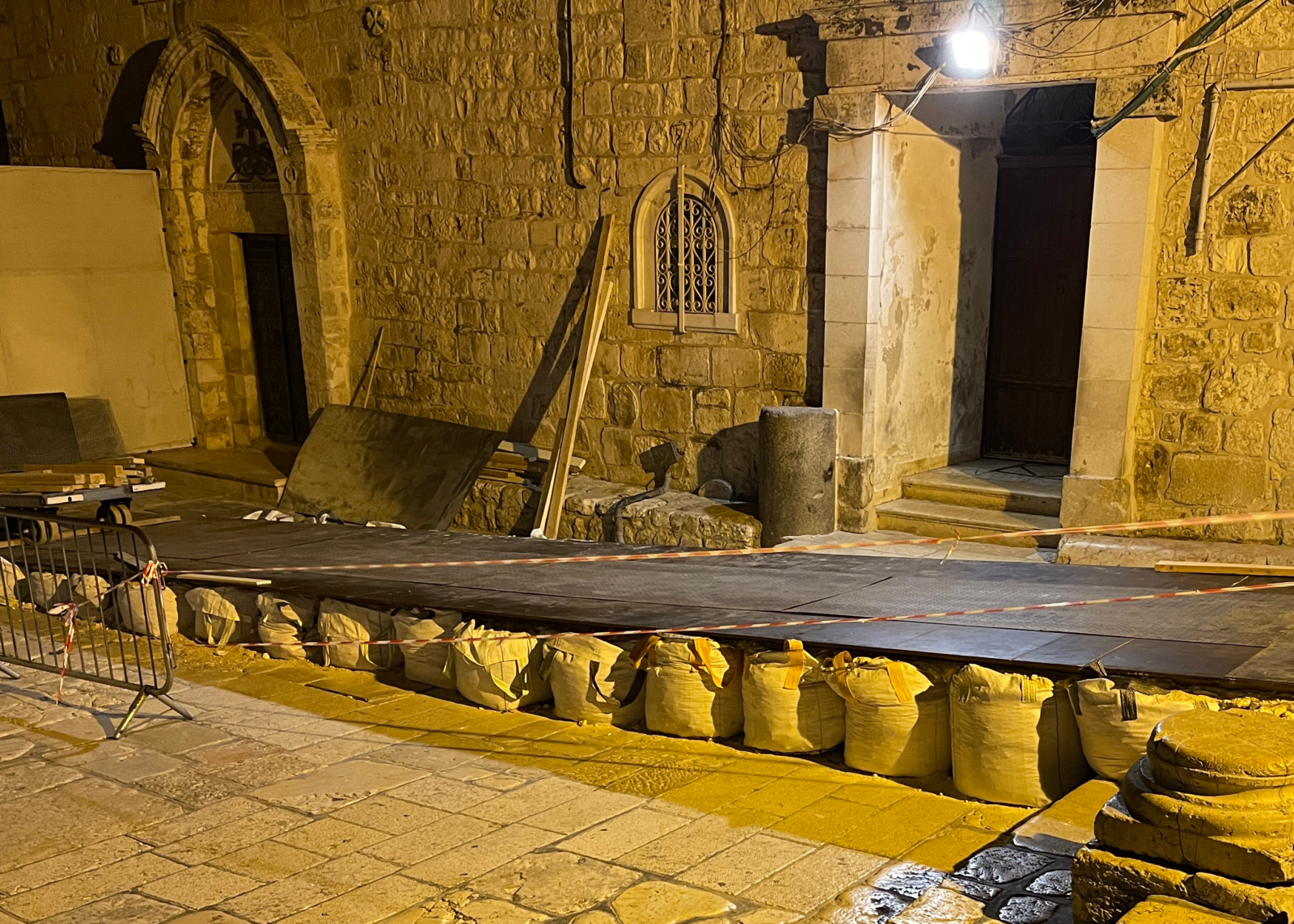
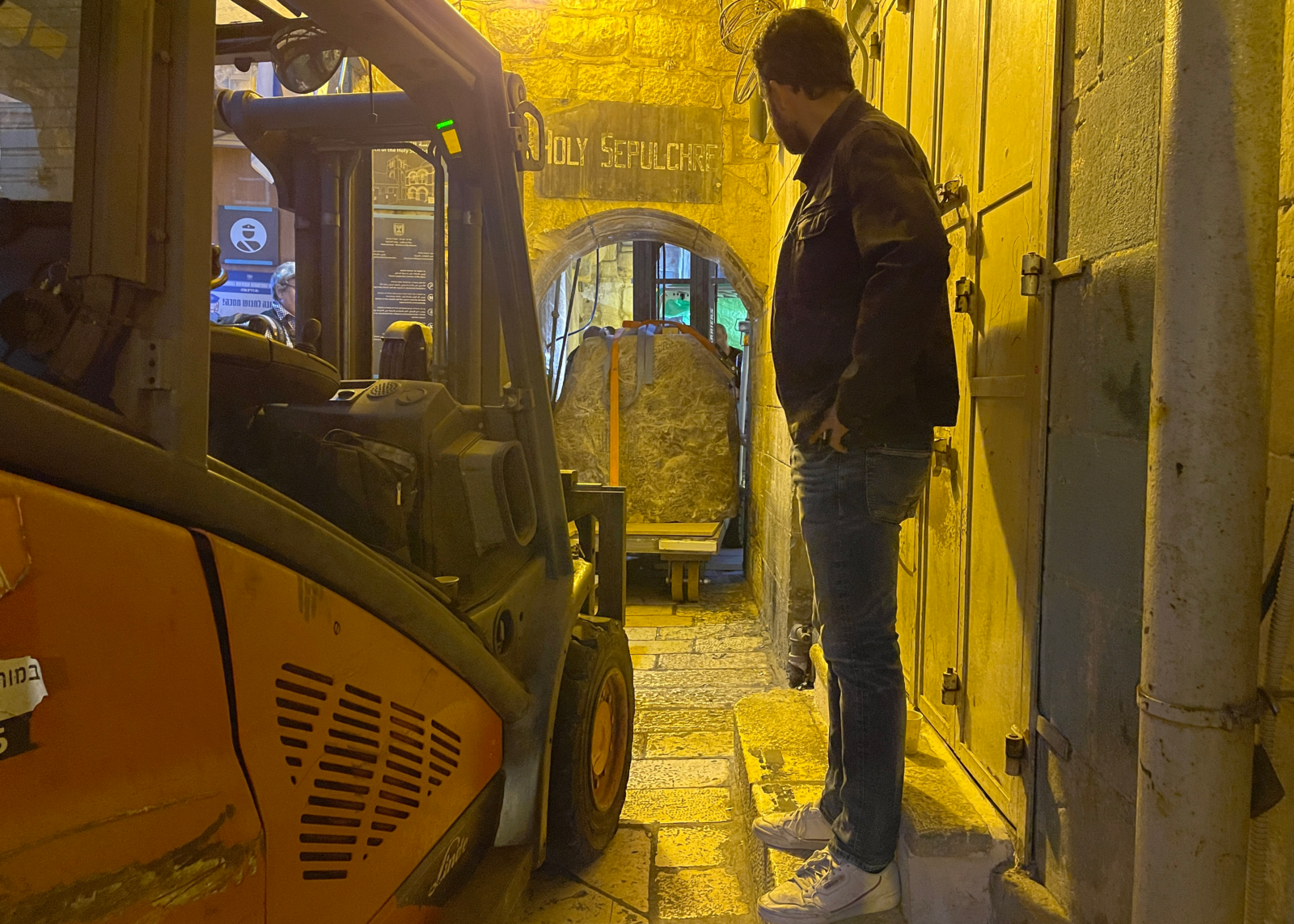

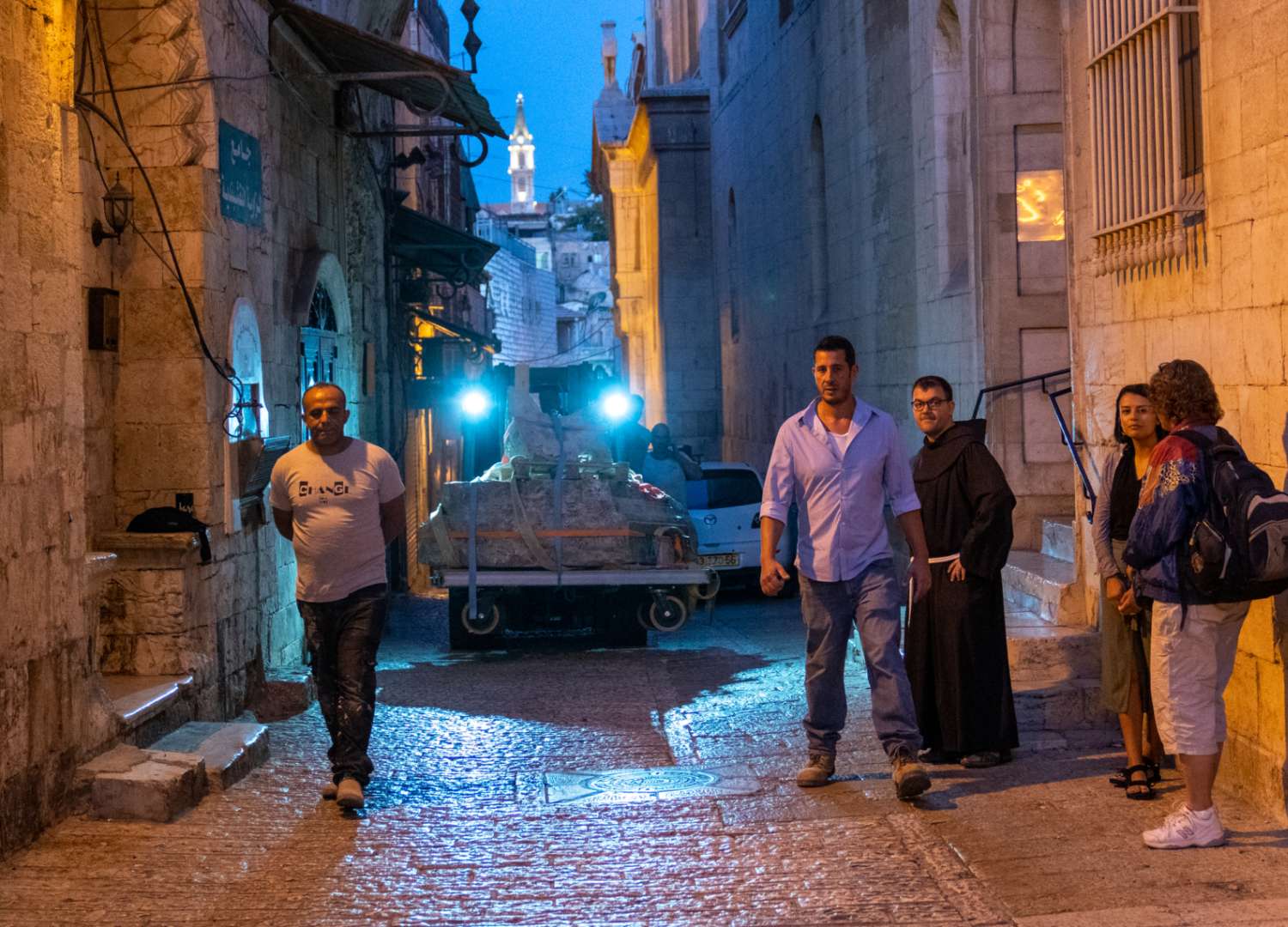
Once the transport was completed, the operations of restoration and consolidation began: only a few traces of the contemporary graffiti were left.


Finally all in one place, the architectural elements of the Rotunda are waiting to be officially presented to the public. In the meantime, they are under study. At the current state of research, after the analyses and measurements we have carried out, the hypothesis formulated at the time by Father V.C. Corbo seems increasingly convincing, namely the reuse in the 4th century of bases and column shafts from an earlier Roman period. Indeed, many features place them in the phase of “Aelia Capitolina” (under the reign of Emperor Hadrian in the 2nd century AD): the monumentality of the dimensions, the finesse of the execution, and the similarity with the structures of that era.
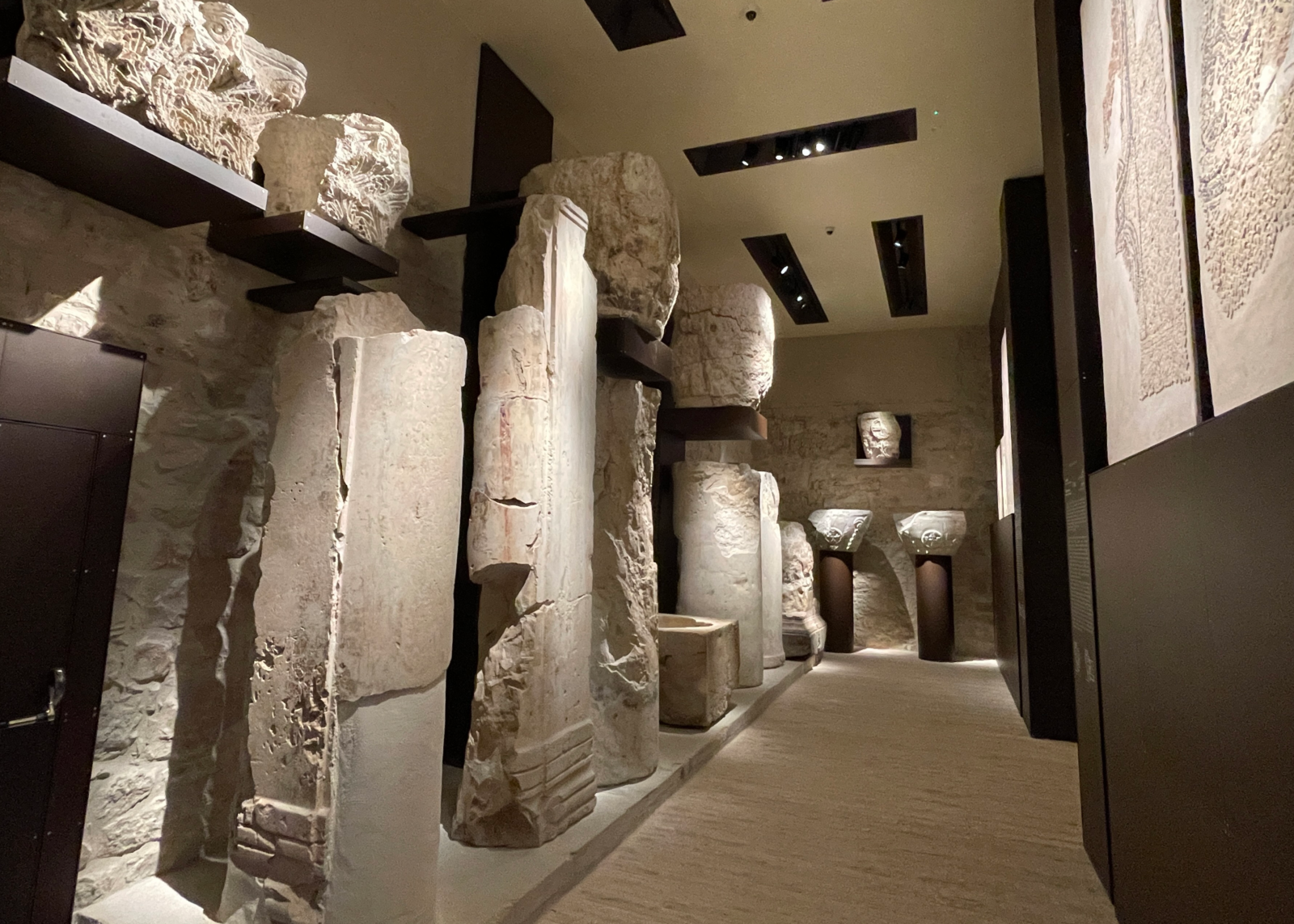
Traces of an unsuccessful modern restoration attempt dating back to the 1970s were found: the insertion of a pivot. The Custody must have quickly given up on the enterprise, given the condition of the piece. The hole for the pivot, started but unfinished, is found only in the lower fragment while there is no trace in the upper fragment. The dimensions of the hole follow the decimal metric system (9x7x3 cm) with the vertices marked in pencil: a guide for the stonecutter.
As on other occasions, the donation from an individual was essential to cover the transportation and restoration costs. To him, to proTerraSancta, and to all those who support the archaeology of the Holy Places, we express our gratitude.



